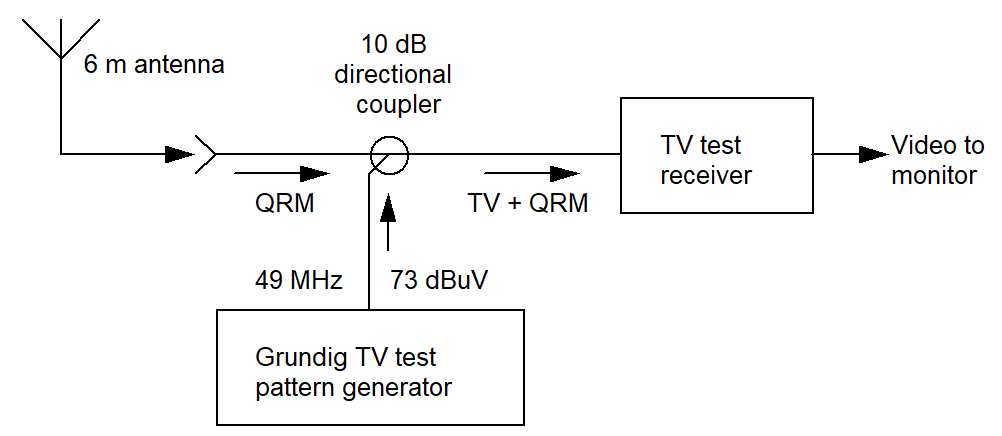For some time, I suffer from tremendous interference from various sources. The worst one is LED lighting which generates very strong interference in the 50 MHz band.
I wanted to see what the interference would be like we still had analogue television. We used to have CCIR system B on VHF and the channel 2 range was 47-54 MHz. We were not allowed to transmit on 50 MHz.
We had one low band VHF transmitter in The Netherlands, transmitting on channel 4, picture carrier 62.25 MHz, from the TV tower in the centre of the country.
Follow this link for a page with photos of the dismantling of the channel 4 antennas in 2007.
The test setup
A Grundig VG1000 test pattern generator was used. It has a simple modulator to generate TV signals on the low VHF band. I tuned the modulator to 49 MHz. A test receiver was tuned to the Grundig signal.
The 6 m antenna pointed to the LED interference source and a directional coupler was used to feed the test pattern emission and the interference (from the 6 m antenna) simultaneously to the TV test receiver. The test pattern signal level was adjusted so that it was 6 dB above the minimum required level for a good picture quality. The input level of the test receiver was about 63 dBuV (+3 dBmV).
The connector from the 6 m antenna was disconnected and reconnected a few times to show the difference with or without interference. .
The LED lighting interference is so strong, that the TV picture becomes very bad and PAL colour stops decoding, probably because the 4.43 MHz PAL subcarrier PLL is overwhelmed by the interfering signal and no longer locks.
The distance to the source is about 30 m, so if this was the house next door, it would worse and effectively wipe out the TV signal.
The video was recorded from the screen with an iPhone and some aliasing is visible.
Here is the video, which speaks for itself. Thank you, European Commission.

